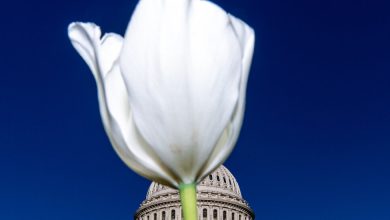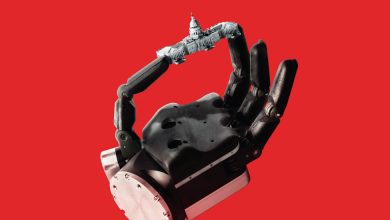That Big Jobs Gain Might Not Be Real

The big January jobs gain that was reported by the government on Friday might not have been so big after all. Employment might even have declined. The source of the confusion: The pandemic, which has vastly complicated the task of adjusting the raw employment data for seasonal fluctuations.
Economists were caught off guard by the Bureau of Labor Statistics report stating that overall employment rose by 467,000 and private-sector payrolls rose by 444,000 in January. One reason for the economists’ surprise is that just two days earlier, the research company Moody’s Analytics and the payroll processor ADP estimated that private-sector payrolls had fallen in January, by 301,000 jobs, the first decline since December 2020. That made sense, given the disruptive effects of the Omicron variant.
On seeing the Bureau of Labor Statistics data, however, the first reaction of most people, including me, was that Moody’s Analytics got it wrong. But after interviewing people at both Moody’s Analytics and the Bureau of Labor Statistics, I’m not so sure anymore. It could be that Moody’s Analytics was right after all and the Omicron variant really did cause U.S. employment to decline in January, adjusted for seasonality.
Both the government and Moody’s Analytics report employment changes on a seasonally adjusted basis. That is, they strip out of the data the predictable ups and downs of employment that are related to seasons, such as the increase in retail hiring in November and December. That allows economists to detect employment changes that result from other dynamics such as expansions and recessions. (Similarly, weather forecasters make an implicit seasonal adjustment whenever they say the weather will be “cool” in July or “warm” in January.)
The Bureau of Labor Statistics normally updates the seasonal adjustments for its payroll report once a year to account for changes in the nature of the economy. For example, the growth of online shopping has increased the employment of truck drivers and warehouse workers during the Christmas shopping season in recent years. On the other hand, the bureau doesn’t tweak its seasonal adjustments in response to one-time, “outlier” events such as a strike in May or a hurricane in September.
The problem is how to deal with Covid-19. For the most part, it’s a one-time event. You wouldn’t want your system of seasonal adjustment to interpret the loss of 20.5 million jobs in April 2020 as something to be expected every April. On the other hand, Covid-19 has at least temporarily affected the seasonality of employment in certain occupations, such as bus driver.
This past year, in light of Covid-19, the Bureau of Labor Statistics broadened the types of events that it classifies as outliers. Until now, each month of Covid-19 impact had to be treated as a separate event, like a fresh hurricane. Now something can be classified as an outlier if it is a “temporary change” that affects a period of several months but eventually diminishes, or even if it’s a “level shift” that permanently raises or lowers employment but doesn’t influence seasonality.
Using this new, broader definition of outliers, last week the Bureau of Labor Statistics rolled out new seasonal adjustments as part of annual revisions that lowered its estimates of job growth in June and July by 807,000 while raising its estimates of job growth in November and December by 709,000. The new seasonal adjustments also applied to the January number, although there’s no prior number to compare it with. Compared with the Moody’s Analytics number, though, it looks high.
Mark Zandi, the chief economist of Moody’s Analytics, told me that his company used the old Bureau of Labor Statistics seasonal adjustments to come up with its estimate of a 301,000 decline in private payrolls in January. He said he thinks the old adjustments might be more accurate than the new ones.
Zandi said “it doesn’t make any sense” that seasonally adjusted job growth would have strengthened in November and December, given the Omicron surge and given data from an experimental Census Bureau survey showing that 12 million people stayed home in January because of Covid-19. He said, “The B.L.S. is reporting amazingly consistent job creation last year despite everything, which may be reality but I’m very, very suspicious of it.” (On the plus side, Zandi said that “we end up in the same place” for the past 12 months as a whole, with both reporting strong job growth totaling about 6.6 million.)
I ran Zandi’s arguments by three Bureau of Labor Statistics experts: John Stewart, supervisory economist in the division of current employment statistics; Chris Manning, the division chief; and Nicole Hudson, an economist. Stewart said Covid-19 is harder to exclude from seasonality than a typical one-time event because its influence on the data has been prolonged and varied.
“The software is pretty tried and true,” Stewart said, referring to the computer program that calculates the seasonal adjustment and determines what’s an outlier event. (The output is also reviewed by economists at the bureau.) The process is transparent, he said: People can and do run the software on the raw data themselves. Still, he conceded, “We may look back at this several years down the road and come up with different interpretations.”
To be clear, no one is trying to filter Covid-19 out of the data. The Bureau of Labor Statistics is not trying to estimate what job growth would have been in the absence of the pandemic. Economists there have a more modest objective, which is to detect how much of any month’s employment change can be attributed to seasonal factors versus everything else, which includes Covid-19 as well as interest rates, supply chain snafus and consumer confidence. But even that modest objective is proving to be quite the challenge.
Elsewhere
Forgiving student loan debt is often pitched as a way to help the poor, but the biggest beneficiaries would be upper-income households, a recent Brookings Institution study concludes. The mistake that some advocates of debt forgiveness make is to compare people by their current net worth — their assets minus their liabilities. By that measure, a recent medical school graduate who took out a lot of loans has negative net worth. That grad is much poorer on paper than a high school dropout and thus seemingly deserving of help. But “wealth, properly measured, should include the value of educational investments students borrowed to make,” the study’s author, Adam Looney, a nonresident senior fellow at Brookings, wrote in an article about the study.
Think of it this way, Looney says: Education increases lifetime earnings. To ignore the value of the education in calculations of who needs a bailout would be “like assessing a homeowner’s wealth by counting their mortgage balance but not the value of their home.” He continues: “Across-the-board forgiveness is therefore a costly and ineffective way to reduce economic gaps by race or socioeconomic status. Only targeted policies can address the inequities caused by federal student lending programs.”
Quote of the day
“Girl, your love is money, your love is money / Yeah, your love can make a man feel rich on minimum wage.”
— Jesse Frasure, Nicolle Galyon and Corey Crowder, “Minimum Wage,” a song recorded by Blake Shelton in 2021
Have feedback? Send a note to [email protected].





